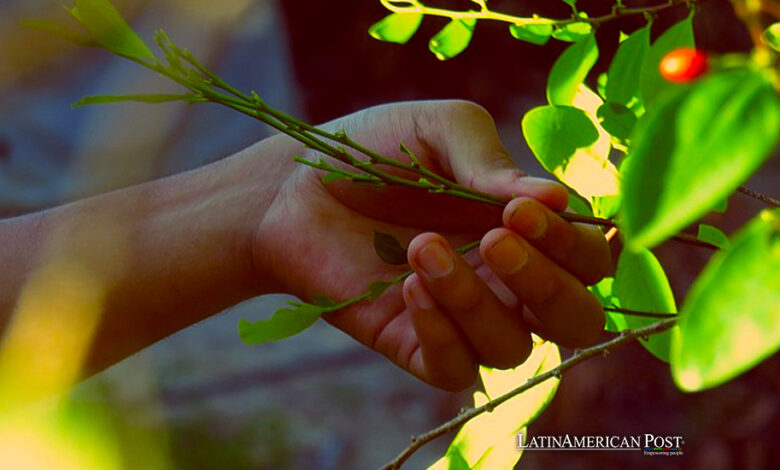Colombia’s Effort to Redefine Coca Plant Beyond Cocaine Stigma

In a pivotal move, Colombia seeks to dissociate the coca plant from its cocaine stigma, showcasing its cultural and alternative uses at a conference in London, a step towards changing global perception and aiding local communities.
Revitalizing the Coca Plant: A Global Perspective
In a significant conference organized in collaboration with the Embassy of Colombia in London and the SOAS University of London, Colombia has embarked on an ambitious journey to redefine the coca plant’s global image. The goal is to disentangle the plant from its notorious association with cocaine and highlight its millennia-old uses, cultural significance, and potential for alternative applications.
The coca plant, deeply ingrained in Latin American history, has been a cornerstone of traditional practices and livelihoods. Colombian botanist Óscar Pérez, a leader at the Royal Botanic Gardens, Kew, emphasized the conventional chewing of coca leaves in Colombia, a practice integral to the culture of various indigenous communities. However, the plant’s link to the narcotics trade has cast a long-standing stigma, adversely affecting these communities.
Addressing this stigma, Pérez asserts that education is critical to shifting perceptions. The coca plant’s association with the drug trade has overshadowed its cultural and historical significance, necessitating a re-education on its various uses and importance in traditional societies.
Global Implications and Nuanced Approaches
Vinicius de Carvalho, a defense and security expert from King’s College London, highlighted the need for international action to address a global, not just Colombian, issue. He pointed out that simply eradicating the coca plant will not resolve the complex problems of violence in Latin America and transborder organized crime. This statement reflects the nuanced understanding required to tackle the multifaceted challenges posed by the illicit drug trade.
The conference showcased alternative uses for the coca plant, moving beyond the traditional substitution crops like cacao or palmito, which are already cultivated in some regions. The participants, including Amazonian chef Mauricio Velasco, discussed the plant’s culinary potential. Velasco’s mission is to “change the face of Colombia through cuisine,” using coca flour for desserts or coca tea, illustrating the plant’s versatility and economic potential.
A Critical Step in Drug Policy Reevaluation
This initiative represents a critical step in addressing the political, social, and economic costs associated with conventional approaches to drug policy. Professor Jonathan Goodhand, director of the Centre for the Study of Illicit Economies, Violence, and Development at SOAS, stated that the conference marked a starting point to “restart the discussion” on the coca plant.
Historically, the coca plant has been a symbol of the complex interplay between indigenous practices and the global narcotics trade. For centuries, indigenous communities in the Andes have used coca leaves for their nutritional and medicinal properties. However, the rise of the worldwide cocaine trade, particularly in the 20th century, led to a drastic shift in the perception and use of the coca plant, casting a shadow over its traditional roles.
Colombia’s Cultural Heritage and Sustainable Alternatives
Colombia, as a significant coca leaf producer, has been at the forefront of this battle, facing the brunt of the war on drugs. The country’s efforts to dissociate the coca plant from its negative connotations are not just about altering global perspectives but also about reclaiming a part of its cultural heritage and providing sustainable alternatives for communities historically involved in coca cultivation.
Also read: Colombia’s Keeps Battling Cocaine Production Amid Fentanyl Growth
Colombia’s initiative to redefine the coca plant extends beyond mere agricultural or economic considerations. It is a cultural, historical, and social endeavor to reshape global understanding and policy toward the coca plant. By showcasing the plant’s diverse uses and deep-rooted cultural significance, Colombia is challenging the global narrative and offering new opportunities for its people. This effort marks a crucial step in addressing the complex legacy of the coca plant and paving the way for a more nuanced and practical approach to drug policy in the region and beyond.




